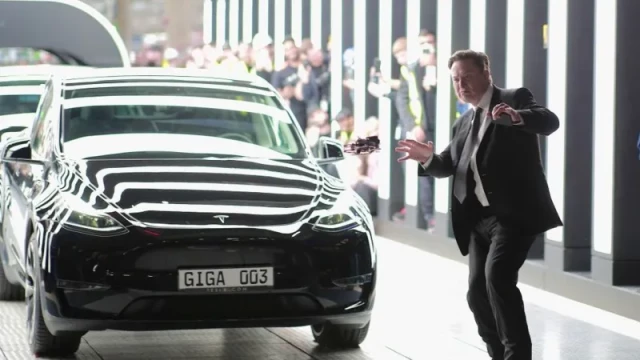Elon Musk is currently in Beijing to discuss the implementation of autonomous driving mode on Tesla cars in China, as reported by the media.
Mr. Musk aims to enable Full Self Driving (FSD) in China and transfer data collected in the country overseas to train its algorithms.
While FSD is available in countries such as the US, it is not yet available in China.
This news follows a US report linking Tesla's autonomous driving modes to at least 13 crashes, including one fatality.
China stands as Tesla's second-largest market. Other car manufacturers like Xpeng, based in Guangzhou, have been striving to rival Tesla by introducing similar self-driving features in their vehicles.
The electric car company has previously taken measures to reassure Chinese authorities about the introduction of FSD in the country, including establishing a data center in Shanghai to handle data about Chinese consumers in compliance with local regulations.
This visit comes shortly after the US National Highway Traffic Safety Administration (NHTSA) announced an investigation into whether a recall effectively addressed safety concerns related to Tesla's driver assistance system.
The NHTSA highlighted that despite the requirement for drivers to remain focused on the road and be ready to take control when autonomous driving is activated, drivers involved in the accidents "were not adequately engaged." This analysis was conducted before Tesla's announced recall intended to resolve the issue.
Tesla's software is designed to ensure that drivers are attentive and that the feature is only used in appropriate conditions, such as on highways.
Mr. Musk has previously pledged that Teslas would be capable of functioning as autonomous "robotaxis" for several years. In 2015, he stated that Teslas would achieve "full autonomy" by 2018. Then, in 2019, he claimed the company would have robotaxis operational by the following year.
Earlier this month, the Tesla CEO announced plans to unveil the company's robotaxi in August.
Critics accuse Mr. Musk of consistently overhyping the potential of futuristic technologies.
BBC News




















